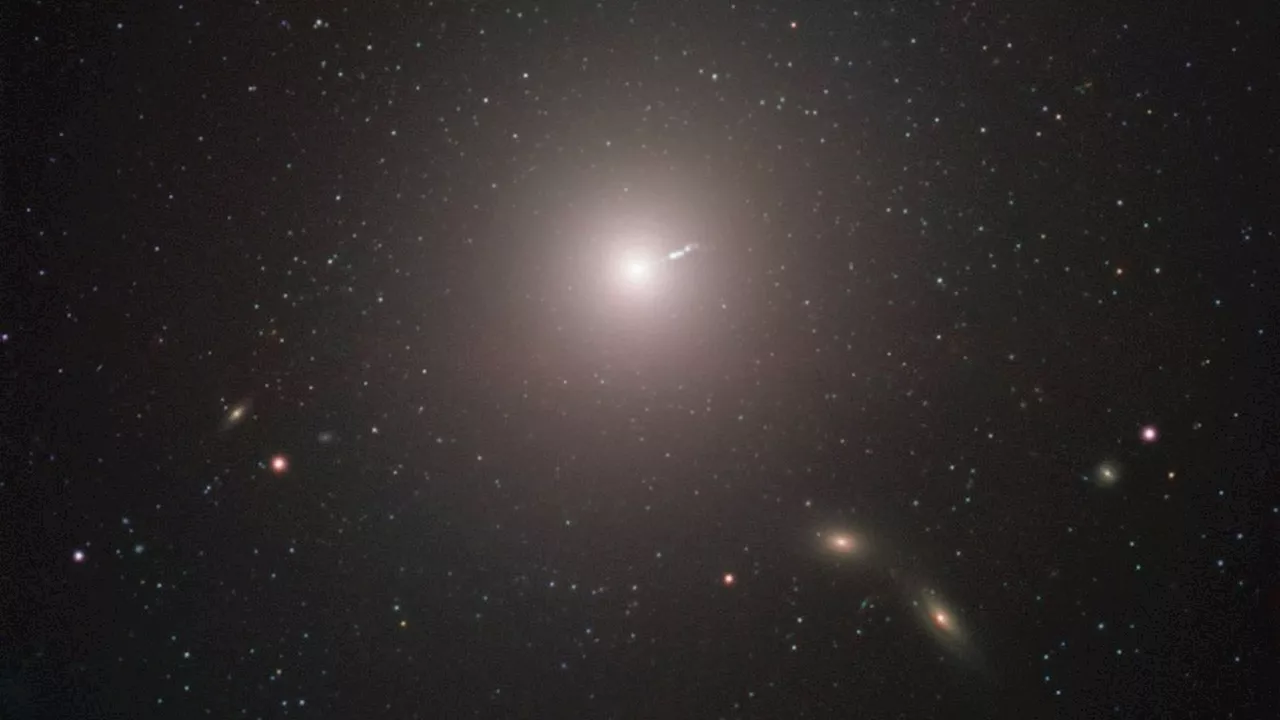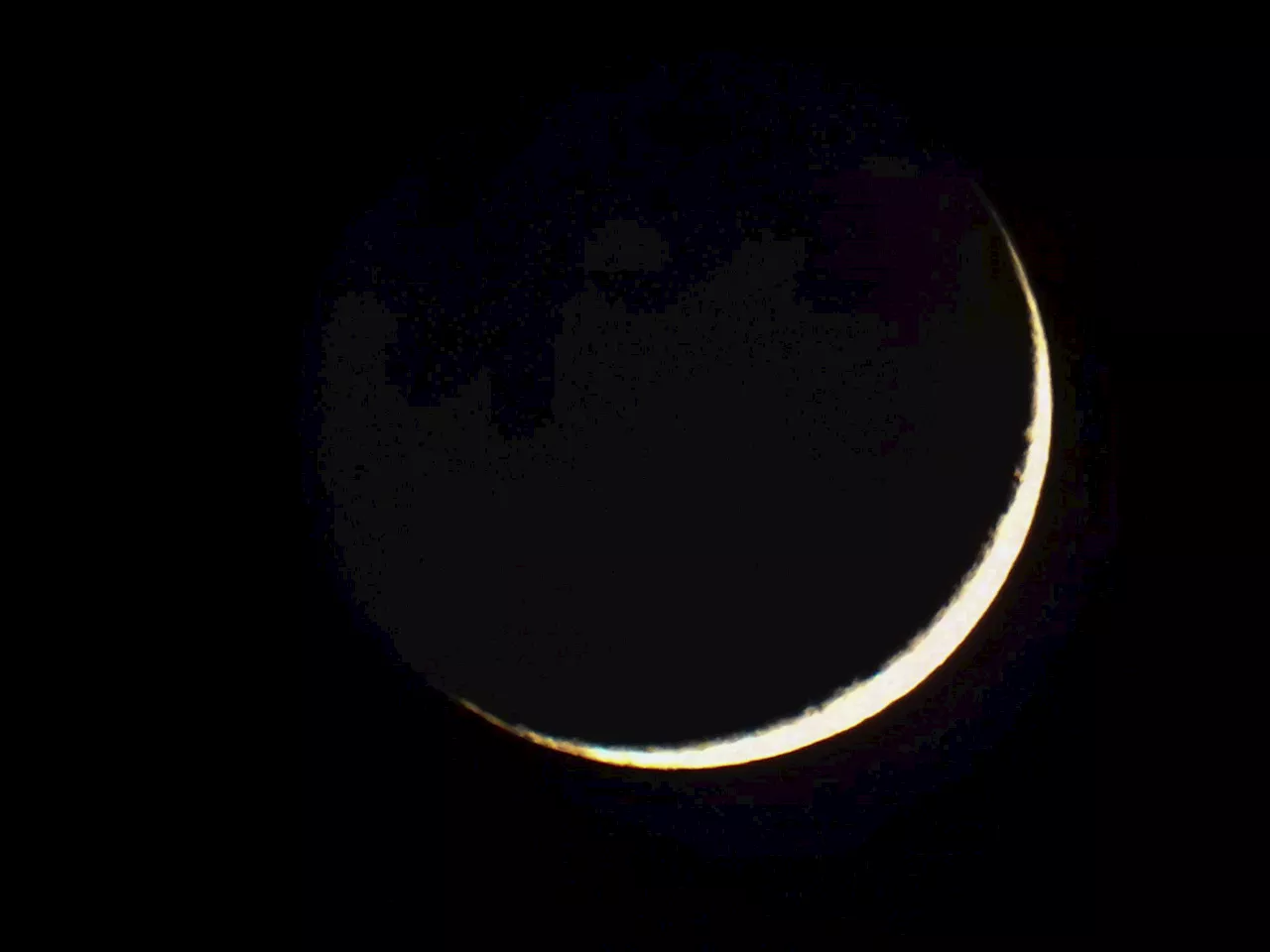A black moon, a rare phenomenon when two new moons occur in a single month, will be visible tonight.
Tonight’s new moon —the second new moon in a month—is going to be what scientists call a black moon . These rare moon types are similar to blue moons—which occur when two full moons happen in one calendar month. Black moons, though, can occur in a few different instances. Unlike the blue moon, which doesn’t actually appear blue at all, these rare moons are exactly what it sounds like. That’s because new moon s are already almost invisible in the night sky.
This makes it a great time to go stargazing, as the brightness of the moon won’t overshadow any of the stars in the night sky. If you’re in the Americas, then you’ll be able to witness this rare black moon on December 30, when the new moon begins its rise around 5:26 p.m. EST. If you’re in Europe, Africa, or Asia, then it’ll be visible on December 31. Just like there are two definitions for blue moons, there are also two definitions for this rare new moon occurrence. The first is what we’ll get to see tonight—when a second new moon occurs in a calendar month. However, the second type is what we call a seasonal black moon. These occur whenever four new moons happen within a season. When that happens, the third new moon of the season is called a black moon. As far as moons go, these are exceptionally rare. In fact, the most common type of black moon only occurs once every 29 months or so, TimeandDate reports. The last of these seasonal black moons happened in May 2023, and the next isn’t expected until August 2025. Meanwhile, the last monthly black moon was in April 2022, and the next one after this isn’t expected until August 2027. That means you’ll have quite a while to wait until another moon like this graces our skies again. As such, I highly recommend heading outside and getting a glimpse of this rare and beautiful cosmic event while it’s here
Black Moon New Moon Astronomy Rare Event Cosmic Phenomena
United States Latest News, United States Headlines
Similar News:You can also read news stories similar to this one that we have collected from other news sources.
 Rare Black Moon Offers Prime Viewing of Celestial BodiesA Black Moon, the second new moon in a single calendar month, will rise on December 30th, providing astronomers with an excellent opportunity to observe distant celestial objects. This phenomenon, also known as an invisible moon, occurs when the moon's illuminated side faces the sun, leaving the night side facing Earth.
Rare Black Moon Offers Prime Viewing of Celestial BodiesA Black Moon, the second new moon in a single calendar month, will rise on December 30th, providing astronomers with an excellent opportunity to observe distant celestial objects. This phenomenon, also known as an invisible moon, occurs when the moon's illuminated side faces the sun, leaving the night side facing Earth.
Read more »
 Huge black hole on fire, emits gamma rays billions times stronger than visible lightThe first-ever photographed black hole emits an extraordinary gamma-ray flare, billions of times more energetic than visible light.
Huge black hole on fire, emits gamma rays billions times stronger than visible lightThe first-ever photographed black hole emits an extraordinary gamma-ray flare, billions of times more energetic than visible light.
Read more »
 Moon Conjunction with Mercury Visible in Some LocationsThis article discusses the upcoming conjunction of the moon and Mercury, visible from certain locations on December 28th and 29th. It explains the phenomenon, the ideal viewing conditions, and specific times and locations where the conjunction can be observed.
Moon Conjunction with Mercury Visible in Some LocationsThis article discusses the upcoming conjunction of the moon and Mercury, visible from certain locations on December 28th and 29th. It explains the phenomenon, the ideal viewing conditions, and specific times and locations where the conjunction can be observed.
Read more »
 Extremely rare, black 'anti-auroras' paint luminous 'letter E' above AlaskaHarry is a U.K.-based senior staff writer at Live Science. He studied marine biology at the University of Exeter before training to become a journalist. He covers a wide range of topics including space exploration, planetary science, space weather, climate change, animal behavior, evolution and paleontology.
Extremely rare, black 'anti-auroras' paint luminous 'letter E' above AlaskaHarry is a U.K.-based senior staff writer at Live Science. He studied marine biology at the University of Exeter before training to become a journalist. He covers a wide range of topics including space exploration, planetary science, space weather, climate change, animal behavior, evolution and paleontology.
Read more »
 Duchess Meghan Is Timeless in a Strapless Black Gown for Rare Red-Carpet AppearanceLittle Archie Harrison has stolen all of our hearts! Here’s what fans of the royals should know about Meghan and Prince Harry’s first child.
Duchess Meghan Is Timeless in a Strapless Black Gown for Rare Red-Carpet AppearanceLittle Archie Harrison has stolen all of our hearts! Here’s what fans of the royals should know about Meghan and Prince Harry’s first child.
Read more »
 Astronomers Detect Rare Black Hole Feeding EventAstronomers have observed a short-lived burst of energy originating from a galaxy 500 million light-years away. This event, captured by the Catalina Real-Time Transient Survey, is believed to be caused by a black hole consuming a star, offering valuable insights into stellar evolution and black hole behavior.
Astronomers Detect Rare Black Hole Feeding EventAstronomers have observed a short-lived burst of energy originating from a galaxy 500 million light-years away. This event, captured by the Catalina Real-Time Transient Survey, is believed to be caused by a black hole consuming a star, offering valuable insights into stellar evolution and black hole behavior.
Read more »
